预约演示
更新于:2025-05-07
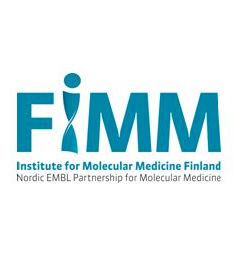
Institute for Molecular Medicine Finland
更新于:2025-05-07
概览
标签
神经系统疾病
治疗性疫苗
DNA疫苗
单克隆抗体
关联
5
项与 Institute for Molecular Medicine Finland 相关的药物靶点- |
作用机制- |
在研适应症 |
非在研适应症- |
最高研发阶段临床1期 |
首次获批国家/地区- |
首次获批日期- |
靶点- |
作用机制 免疫刺激剂 |
在研适应症 |
非在研适应症- |
最高研发阶段临床1期 |
首次获批国家/地区- |
首次获批日期- |
靶点- |
作用机制 免疫刺激剂 |
在研适应症 |
非在研适应症- |
最高研发阶段临床1期 |
首次获批国家/地区- |
首次获批日期- |
4
项与 Institute for Molecular Medicine Finland 相关的临床试验NCT05043701
Individualized Systems Medicine Strategy for Targeting Cancer Stem Cells in Patients With Recurrent Glioblastoma (ISM-GBM)
A study to determine the feasibility and safety of individualized cancer stem cell targeted therapy based on high-throughput functional profiling of FDA/EMA-approved drugs in patients with GBM that has recurred or progressed following standards-of-care (RT, TMZ).
开始日期2023-03-01 |
申办/合作机构 |
NCT05642429
A Phase I, Randomized, Double-Blind Study to Evaluate Safety and Tolerability of Amyloid-β Vaccine, AV-1959D, in Patients With Early Alzheimer's Disease.
Phase 1 clinical trial of AV-1959 amyloid-β vaccine for Alzheimer's disease (AD).
开始日期2023-02-27 |
申办/合作机构 |
NCT04538521
NiaMIT (NiaMIT_0001) Continuation for Early-stage Mitochondrial Myopathy Patients to Investigate the Effect of Niacin Supplementation on Systemic Nicotinamide Adenine Dinucleotide (NAD+) Metabolism, Physiology and Muscle Performance
The most frequent form of adult-onset mitochondrial disorders is mitochondrial myopathy, often manifesting with progressive external ophthalmoplegia (PEO), progressive muscle weakness and exercise intolerance. Mitochondrial myopathy is often caused by single heteroplasmic mitochondrial DNA (mtDNA) deletions or multiple mtDNA deletions, the former being sporadic and latter caused by mutations in nuclear-encoded proteins of mtDNA maintenance. Currently, no curative treatment exists for this disease. However, an NAD+ precursor vitamin B3 has been demonstrated to give power to diseased mitochondria in animal studies by increasing intracellular levels of NAD+, the important cofactor required for the cellular energy metabolism. Vitamin B3 exists in several forms: nicotinic acid (niacin), nicotinamide, and nicotinamide riboside. Nicotinamide riboside has been shown to prevent and improve disease symptoms in several mouse models of mitochondrial myopathy. In addition, the investigators have previously observed that treatment with another form of vitamin B3, niacin, improved NAD+ deficiency and muscle performance in mitochondrial myopathy patients.
In this study, the form of vitamin B3, niacin, is used to activate dysfunctional mitochondria and to rescue signs of mitochondrial myopathy in early-stage patients. Of the vitamin B3 forms, niacin, is employed, because it has been used in large doses to treat hypercholesterolemia patients, and has a proven safety record in humans. Phenotypically similar mitochondrial myopathy patients are studied, as the investigator's previous expertise indicates that similar presenting phenotypes predict uniform physiological and clinical responses to interventions, despite varying genetic backgrounds. Patients with mitochondrial myopathy, typically harboring a sporadic single mtDNA deletion or a mutation in nuclear mtDNA maintenance gene causing multiple mtDNA deletions, are recruited. In addition, data from healthy controls from the primary NiaMIT study (ClinicalTrials.gov Identifier: NCT03973203) are utilized to analyse the collected data. Clinical examinations and collection of muscle biopsies are performed at the time points 0 and 10 months. Fasting blood samples are collected every second week until 1.5 months, every fourth week until 4 months and thereafter every six weeks until the end of the study. The effects of niacin on disease markers, muscle mitochondrial biogenesis, muscle strength and the metabolism of the whole body are studied in patients and healthy controls.
The hypothesis is that an NAD+ precursor, niacin, will increase intracellular NAD+ levels, improve mitochondrial biogenesis and alleviate the symptoms of mitochondrial myopathy already in early stages of the disease.
In this study, the form of vitamin B3, niacin, is used to activate dysfunctional mitochondria and to rescue signs of mitochondrial myopathy in early-stage patients. Of the vitamin B3 forms, niacin, is employed, because it has been used in large doses to treat hypercholesterolemia patients, and has a proven safety record in humans. Phenotypically similar mitochondrial myopathy patients are studied, as the investigator's previous expertise indicates that similar presenting phenotypes predict uniform physiological and clinical responses to interventions, despite varying genetic backgrounds. Patients with mitochondrial myopathy, typically harboring a sporadic single mtDNA deletion or a mutation in nuclear mtDNA maintenance gene causing multiple mtDNA deletions, are recruited. In addition, data from healthy controls from the primary NiaMIT study (ClinicalTrials.gov Identifier: NCT03973203) are utilized to analyse the collected data. Clinical examinations and collection of muscle biopsies are performed at the time points 0 and 10 months. Fasting blood samples are collected every second week until 1.5 months, every fourth week until 4 months and thereafter every six weeks until the end of the study. The effects of niacin on disease markers, muscle mitochondrial biogenesis, muscle strength and the metabolism of the whole body are studied in patients and healthy controls.
The hypothesis is that an NAD+ precursor, niacin, will increase intracellular NAD+ levels, improve mitochondrial biogenesis and alleviate the symptoms of mitochondrial myopathy already in early stages of the disease.
开始日期2019-02-11 |
申办/合作机构 |
100 项与 Institute for Molecular Medicine Finland 相关的临床结果
登录后查看更多信息
0 项与 Institute for Molecular Medicine Finland 相关的专利(医药)
登录后查看更多信息
375
项与 Institute for Molecular Medicine Finland 相关的文献(医药)2025-06-01·European Journal of Nutrition
Associations of alcohol with the human gut microbiome and prospective health outcomes in the FINRISK 2002 cohort
Article
作者: Inouye, Michael ; Salomaa, Veikko ; Jousilahti, Pekka ; Meric, Guillaume ; Lahti, Leo ; Koponen, Kari ; Havulinna, Aki ; Knight, Rob ; Männistö, Satu ; McDonald, Daniel ; Niiranen, Teemu
2025-04-21·Cancer Research
Abstract 6470: Spatial analysis of the tumor microenvironment in diffuse large B-cell lymphoma reveals clinically relevant recurrent cellular neighborhoods
作者: Meriranta, Leo ; Pellinen, Teijo ; Leivonen, Suvi-Katri ; Karjalainen-Lindsberg, Marja-Liisa ; Autio, Matias ; Leppä, Sirpa
2025-04-21·Cancer Research
Abstract 5310: Spatially resolved cell profiling of testicular diffuse large B-cell lymphoma unveils recurrent cellular neighborhoods associated with survival
作者: Autio, Matias ; Pellinen, Teijo ; Pollari, Marjukka ; Leivonen, Suvi-Katri ; Leppä, Sirpa ; Karjalainen-Lindsberg, Marja-Liisa
10
项与 Institute for Molecular Medicine Finland 相关的新闻(医药)2024-07-22
Azenta will provide proteomics technology profiling on up to 20,000 individuals.
BURLINGTON, Mass., July 22, 2024 /PRNewswire/ -- Azenta, Inc. (Nasdaq: AZTA) today announced its participation in the FinnGen project, a large-scale research initiative at the forefront of personalized medicine in Finland. The FinnGen project is a pioneering endeavor that has collected and is currently analyzing genomic and health data from a cohort of 500,000 Finnish biobank participants.
In collaboration with the University of Helsinki, the organization leading the FinnGen study, Azenta will provide comprehensive proteomics profiling on up to 20,000 individuals, underscoring Azenta's commitment to advancing healthcare innovation and personalized treatments. Azenta will use Olink's advanced proteomics technology, based on the proprietary Proximity Extension Assay, to provide high-quality protein-level measurements across all major biological pathways.
"FinnGen's adoption of proteomics marks a pivotal advancement in our quest to decode the complexities of human health and disease. By integrating the dynamic insights of proteomics with our extensive genomic data, we can gain a deeper understanding of disease mechanisms, identify new biomarkers for early detection, and uncover novel therapeutic targets. We are pleased to collaborate with Azenta Life Sciences, and trust that they will provide excellent service and deliver high-quality proteomic data with a fast turnaround time," said Professor Aarno Palotie, FinnGen Scientific Director from the Institute for Molecular Medicine Finland (FIMM), University of Helsinki. "Combined with excellent quality and reliable results, Azenta Life Sciences can help us construct a strong foundation for advancing the field of personalized medicine."
"As one of the collaborators in the FinnGen Project, Azenta looks forward to making meaningful contributions to personalized medicine and revolutionizing healthcare for generations to come," said Ginger Zhou, PhD., Senior Vice President and General Manager, GENEWIZ Multiomics & Synthesis Solutions from Azenta Life Sciences. "Multiomics technologies from Azenta enable researchers to efficiently generate detailed proteomics data from study participants carrying medically and clinically significant genetic variants, opening up a world of possibilities for understanding disease mechanisms and developing targeted treatments."
About FinnGen
FinnGen is a large public-private partnership aiming to collect and analyze genome and health data from 500,000 Finnish biobank participants. FinnGen aims on one hand to provide novel medically and therapeutically relevant insights but also construct a world-class resource that can be applied for future studies.
FinnGen is one of the very first personalized medicine projects at this scale and the public-private collaborative nature of the project is exceptional compared to many ongoing studies. FinnGen brings together Finnish universities, hospitals and hospital districts, THL, Blood Service, biobanks, FINBB and international pharmaceutical companies and hundreds of thousands of Finns. Because collaboration is the key to achieving breakthroughs in disease prevention, diagnosis, and treatment, we welcome everyone on this journey into our shared heritage.
For more information, please visit .
About Azenta Life Sciences
Azenta, Inc. (Nasdaq: AZTA) is a leading provider of life sciences solutions worldwide, enabling impactful breakthroughs and therapies to market faster. Azenta provides a full suite of reliable cold-chain sample management solutions and multiomics services across areas such as drug development, clinical research, and advanced cell therapies for the industry's top pharmaceutical, biotech, academic, and healthcare institutions globally. Our global team delivers and supports these products and services through our industry-leading brands, including GENEWIZ, FluidX, Ziath, 4titude, Limfinity, Freezer Pro, Barkey and B Medical Systems.
Azenta is headquartered in Burlington, Massachusetts, with operations in North America, Europe and Asia. For more information, please visit .
"Safe Harbor Statement" under Section 21E of the Securities Exchange Act of 1934
Some statements in this release are forward-looking statements made under Section 21E of the Securities Exchange Act of 1934. These statements are neither promises nor guarantees but involve risks and uncertainties, both known and unknown, that could cause Azenta's financial and business results to differ materially from our expectations. They are based on the facts known to management at the time they are made. Other forward-looking statements include but are not limited to statements about the prospects of the FinnGen Project and our ability to contribute to the advancement of personalized medicine. Factors that could cause results to differ from our expectations include the following: changes in technology and/or science that impact our ability to enable researchers to generate the proteomics data required to understand disease and develop targeted treatments and other factors and other risks, including those that we have described in our filings with the Securities and Exchange Commission, including but not limited to our Annual Report on Form 10-K, Current Reports on Form 8-K and our Quarterly Reports on Form 10-Q. As a result, we can provide no assurance that our future results will not be materially different from those projected. Azenta expressly disclaims any obligation or undertaking to release publicly any updates or revisions to any such statement to reflect any change in our expectations or any change in events, conditions, or circumstances on which any such statement is based. Azenta undertakes no obligation to update the information contained in this press release.
INVESTOR CONTACTS:
Yvonne Perron
Vice President, Financial Planning & Analysis, and Investor Relations
[email protected]
Sherry Dinsmore
[email protected]
Azenta's use of third-party trademarks and brands are for identification only and does not imply affiliation or endorsement. All trademarks used herein are the property of their respective owners.
SOURCE Azenta
2024-04-12
A study showed that a genetic predisposition for higher muscle strength predicts a longer lifespan and a lower risk for developing common diseases. This is a highly comprehensive international study on hereditary muscle strength and its relationship to morbidity. The genome and health data of more than 340,000 Finns was used in the research.
A study conducted at the Faculty of Sport and Health Sciences at the University of Jyväskylä showed that a genetic predisposition for higher muscle strength predicts a longer lifespan and a lower risk for developing common diseases. This is the most comprehensive international study to date on hereditary muscle strength and its relationship to morbidity. The genome and health data of more than 340,000 Finns was used in the research.
Muscle strength, especially hand grip strength, can indicate an individual's physiological resources to protect against age-related diseases and disabilities, as well as their ability to cope with them. Age-related loss of muscle strength is individual and influenced not only by lifestyle but also by genetics.
The study revealed that individuals with a genetic predisposition for higher muscle strength have a slightly lower risk for common noncommunicable diseases and premature mortality. However, it did not predict better survival after acute adverse health events compared to the time before illness onset.
"It seems that a genetic predisposition for higher muscle strength reflects more on an individual's intrinsic ability to resist and protect oneself against pathological changes that occur during aging than the ability to recover or completely bounce back after severe adversity," says doctoral researcher Päivi Herranen from the Faculty of Sport and Health Sciences.
The research utilized a unique study population
Muscle strength is a multifactorial trait influenced by lifestyle and environmental factors but also by numerous genetic variants, each with a very small effect on muscle strength. In this study, the genetic predisposition for muscle strength was defined by constructing a polygenic score for muscle strength, which summarizes the effects of hundreds of thousands of genetic variants into a single score. The polygenic score makes it possible to compare participants with an exceptionally high or low genetic predisposition for muscle strength, and to investigate associations with inherited muscle strength and other phenotypes, in this case, common diseases.
"In this study, we were able to utilize both genetic information and health outcomes from over 340,000 Finnish men and women," Herranen explains.
"To our knowledge, this is the first study to investigate the association between a genetic predisposition for muscle strength and various diseases on this scale."
Further research on the effects of lifestyles is still needed
Information about the genetic predisposition for muscle strength could be used alongside traditional risk assessment in identifying individuals who are at particularly high risk of common diseases and health adversities. However, further research on the topic is still needed.
"Based on these results, we cannot say how lifestyle factors, such as physical activity, modify an individual's intrinsic ability to resist diseases and whether their impact on health differs among individuals due to genetics," Herranen notes.
The study utilized the internationally unique FinnGen dataset, compiled through the collaboration of Finnish biobanks. The dataset consisted of 342,443 Finns who had given their consent and provided a biobank sample. The participants were aged 40 to 108 years, and 53% of them were women. The diagnoses selected for the study were based on the leading causes of death and the most significant noncommunicable diseases in Finland. Selected diagnoses included the most common cardiometabolic and pulmonary diseases, musculoskeletal and connective tissue diseases, falls and fractures, mental health and cognitive disorders, cancers, as well as overall mortality and mortality from cardiovascular diseases.
The study is the second publication of Päivi Herranen's doctoral thesis, which investigates how genetics and environmental factors affect biological aging, particularly the weakening of muscle strength and functional capacity with age. The research is part of the GenActive project, funded by the Research Council of Finland and the Juho Vainio and Päivikki and Sakari Sohlberg foundations. The project is led by Assistant Professor and Academy Research Fellow Elina Sillanpää. The research was conducted in collaboration with the Gerontology Research Center (GEREC), the Institute for Molecular Medicine Finland (FIMM), and the FinnGen research project.
2023-07-17
TOKYO, July 17, 2023 /PRNewswire/ -- ThinkCyte today announced a strategic research partnership with the Institute for Molecular Medicine Finland (FIMM-HiLIFE), University of Helsinki aimed at advancing the understanding of leukemia and its treatment. The research partnership leverages ThinkCyte's new artificial intelligence (AI)-driven cell characterization and sorting platform, VisionSort, with FIMM's world renowned biorepository of clinically annotated leukemia samples and expertise in drug screening, with the aim of uncovering new insights into how to treat leukemias and other hematological malignancies.
"Blood cancers are a complex, heterogeneous set of diseases and while the treatment landscape has advanced in recent years, there is still a lot we don't know," said Caroline Heckman, Research Director at FIMM. "By combining ThinkCyte's AI-based platform to detect novel, disease-related changes in cell morphology with our curated collection of patient samples and research expertise, this approach will enable us to view these diseases and intervention strategies in an entirely new, holistic way."
FIMM hosts the Finnish Hematological Biobank, which is a national biorepository containing an extensive clinical set of leukemia sample series taken at different timepoints of disease and treatment stages (e.g. at diagnosis, remission, and relapse). By combining their technology, resources, and expertise, the groups seek to characterize how cell morphology changes in different types of blood cancer and how these changes can inform treatment selection, monitor disease progression, and aid in the identification of novel drug targets.
"We are very excited about the research partnership with FIMM, a global leader in using innovative approaches and technologies to understand and ultimately make a meaningful impact in the lives of patients with blood cancer," said Janette Phi, Chief Business Officer at ThinkCyte. "The insights we will gain from this research collaboration can be extended to many other diseases and we look forward to seeing the new avenues of R&D this collaboration will open up."
About ThinkCyte Inc.
ThinkCyte, founded in 2016 with offices in Tokyo, Japan and Redwood City, California is a biotechnology company that develops innovative scientific instruments based on integrated, multidisciplinary technologies to enable life science research, diagnostics, and therapeutic development. The company pioneered Ghost Cytometry, a proprietary AI-based, label-free cell sorting technology and partners with major global biopharmaceutical companies and leading academic research institutes to further drive groundbreaking research. For more information, please visit .
To learn more about research partnerships or other partnering opportunities with ThinkCyte, contact [email protected].
About FIMM
The Institute for Molecular Medicine Finland (FIMM) is an independent research institute located in Helsinki, Finland under the University of Helsinki, the Helsinki Institute of Life Science (HiLIFE), and a member of the EMBL Nordic Partnership for Molecular Medicine. It has a driving mission to perform innovative research on patients and populations targeted towards understanding drivers of health and disease, and aims at delivering improvements to the safety, efficacy, and efficiency of healthcare in Finland and beyond. For more information, please visit .
Media Contact:
Willem Westra
512-589-3872
[email protected]com
SOURCE ThinkCyte Inc.
细胞疗法
100 项与 Institute for Molecular Medicine Finland 相关的药物交易
登录后查看更多信息
100 项与 Institute for Molecular Medicine Finland 相关的转化医学
登录后查看更多信息
组织架构
使用我们的机构树数据加速您的研究。
登录
或
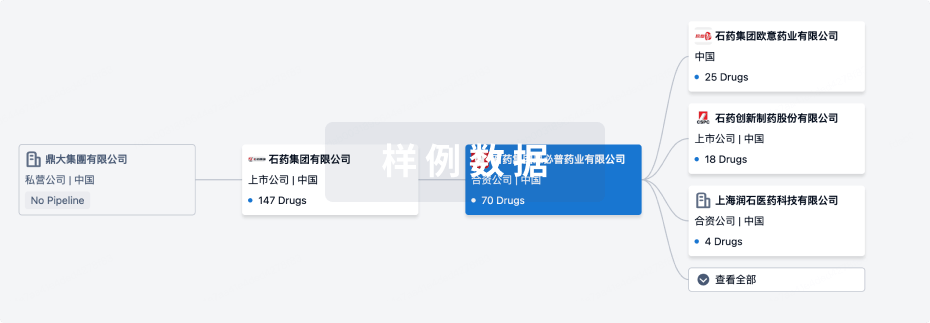
管线布局
2026年01月06日管线快照
管线布局中药物为当前组织机构及其子机构作为药物机构进行统计,早期临床1期并入临床1期,临床1/2期并入临床2期,临床2/3期并入临床3期
临床前
3
2
临床1期
登录后查看更多信息
当前项目
| 药物(靶点) | 适应症 | 全球最高研发状态 |
|---|---|---|
阿尔茨海默氏症 DNA 疫苗(Institute for Molecular Medicine Finland) | 阿尔茨海默症 更多 | 临床1期 |
AV-1959D | 阿尔茨海默症 更多 | 临床1期 |
AV-1959R | 阿尔茨海默症 更多 | 临床前 |
Alzheimer's disease vaccine(Vaxine) | 阿尔茨海默症 更多 | 临床前 |
AV-1953R ( APP x TAU ) | 阿尔茨海默症 更多 | 临床前 |
登录后查看更多信息
药物交易
使用我们的药物交易数据加速您的研究。
登录
或
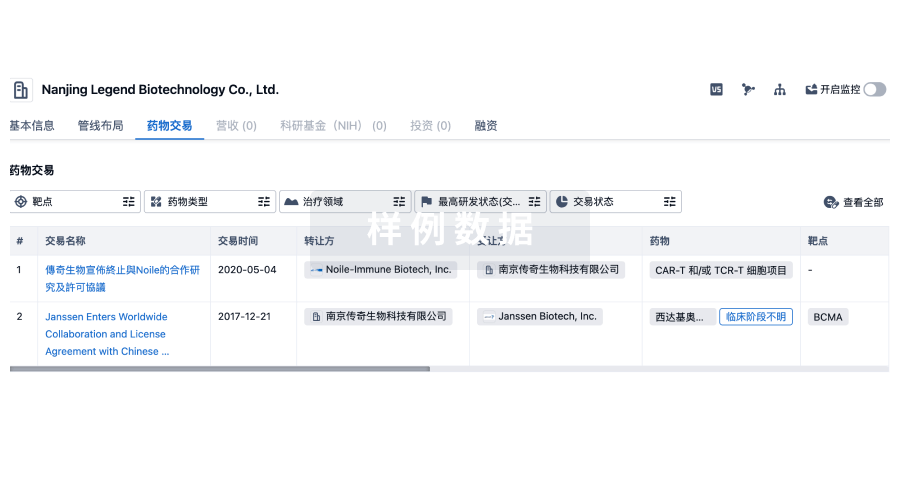
转化医学
使用我们的转化医学数据加速您的研究。
登录
或
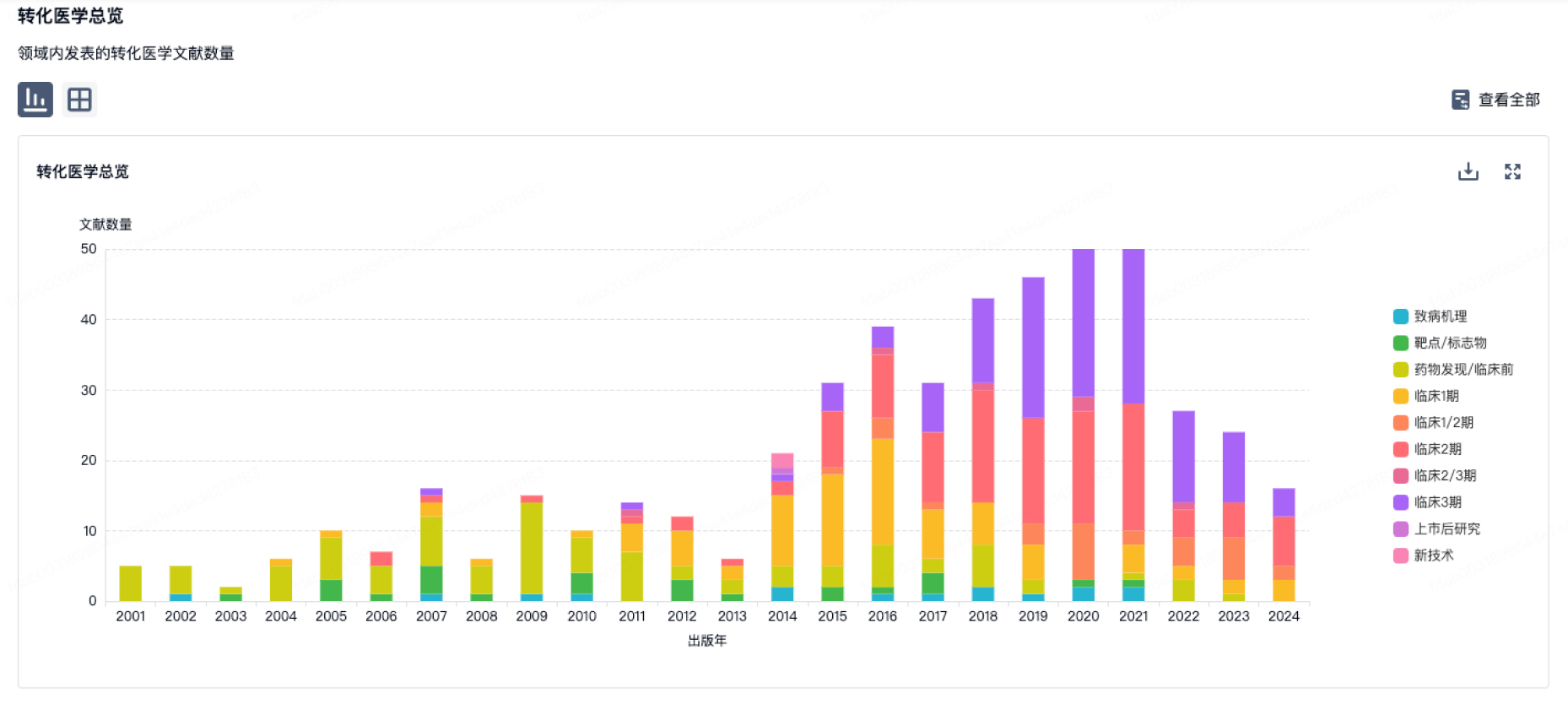
营收
使用 Synapse 探索超过 36 万个组织的财务状况。
登录
或
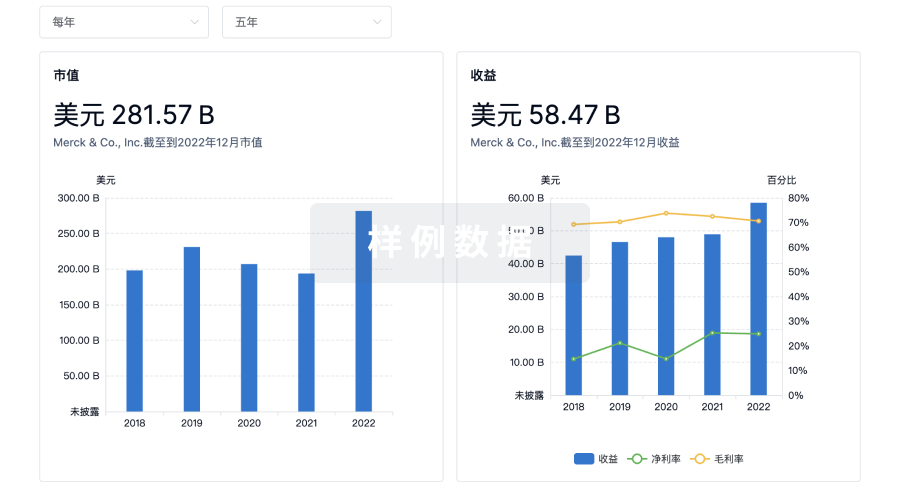
科研基金(NIH)
访问超过 200 万项资助和基金信息,以提升您的研究之旅。
登录
或

投资
深入了解从初创企业到成熟企业的最新公司投资动态。
登录
或
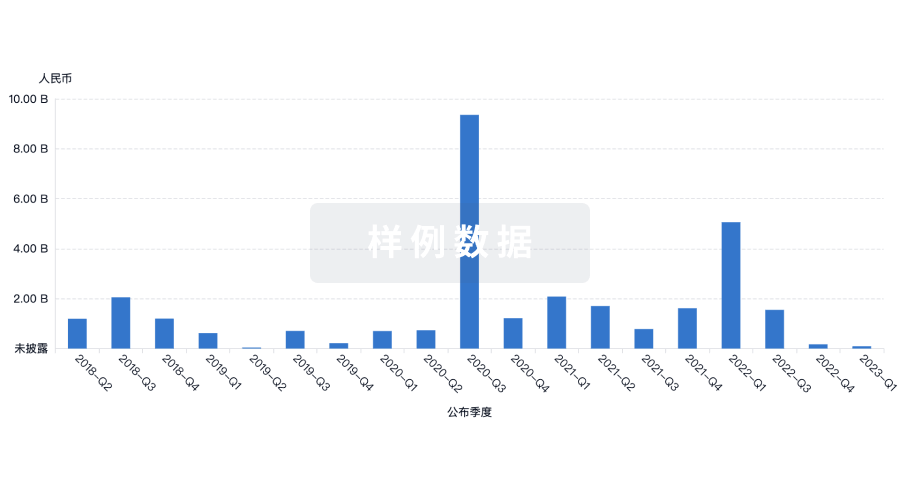
融资
发掘融资趋势以验证和推进您的投资机会。
登录
或
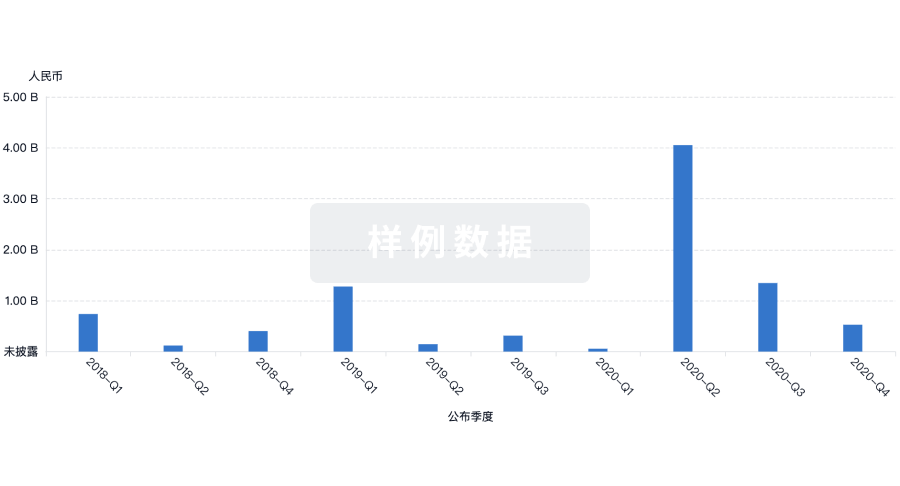
生物医药百科问答
全新生物医药AI Agent 覆盖科研全链路,让突破性发现快人一步
立即开始免费试用!
智慧芽新药情报库是智慧芽专为生命科学人士构建的基于AI的创新药情报平台,助您全方位提升您的研发与决策效率。
立即开始数据试用!
智慧芽新药库数据也通过智慧芽数据服务平台,以API或者数据包形式对外开放,助您更加充分利用智慧芽新药情报信息。
生物序列数据库
生物药研发创新
免费使用
化学结构数据库
小分子化药研发创新
免费使用


